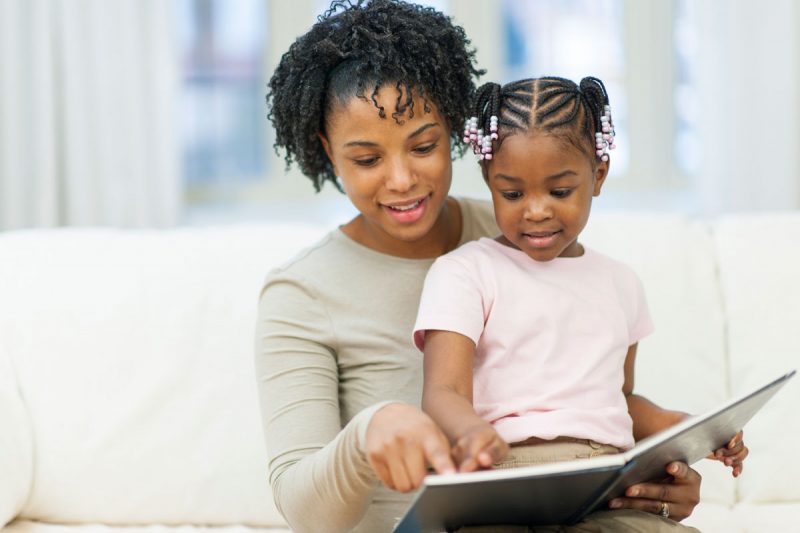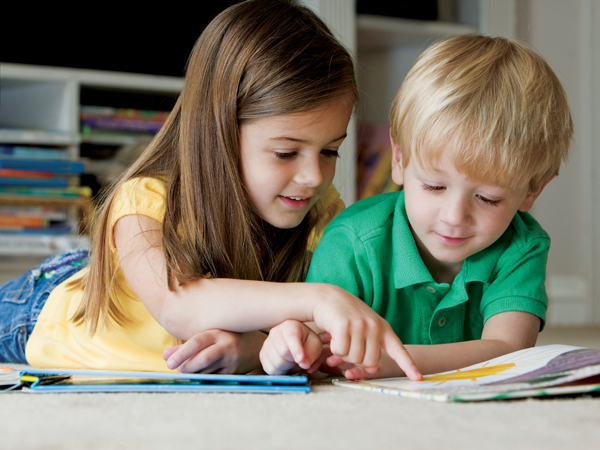
Worries about pandemic-related academic progress will persist but …
Seize the golden opportunity that summer presents and delve into a good book
With heavier days of the COVID-19 pandemic behind us, this summer looks a lot brighter than the last. We are reuniting with family, planning trips and slowly finding our way back to restaurants, stadiums and concerts. Despite these signs of optimism, many parents remain worried about the cost of the pandemic on their child’s academic progress.
While tutors, camps and school-based summer enrichment programs may be part of your child’s plans, don’t overlook the evergreen answer to “summer slide” concerns: open a book.
“Reading to children not only improves a child’s vocabulary, skills like recognition of sounds and letters, and a child’s listening skills, it also promotes healthy, nurturing relationships with loved ones,” said Dr. Jessica Foster, director of Developmental Behavioral Pediatrics at Akron Children’s. “When you hold your child close while enjoying a book together, you can both relax, de-stress and enjoy the creativity and fun of the pictures and stories. Children who spend time enjoying books from a very young age are much more likely to grow into young people who are excited to read on their own.”
Here are some ideas to get words introduced throughout your child’s day:
- Set aside time every day for reading. Even when your child is reading on his or her own, continue to read aloud at bedtime or another time on a regular basis.
- Most public library systems offer summer reading programs that award children with prizes for reading a set number of books. They also offer a variety of programs ranging from arts and crafts to teen book discussion groups.
- Listen to books while you take long drives. Your library probably has a good selection of books on CD or may be affiliated with an app (like Libby from Overdrive) and allows you to listen to audiobooks on your smartphone or synced to your car via Bluetooth.
- “Cooking together is another form of literacy, says Heidi Kline, coordinator of Akron Children’s Reach Out and Read Program. “You are reading a recipe and following directions without even realizing it.”
- Kline also suggests parents encourage their kids to keep a summer journal, write letters to pen pals, play board games and do word searches. “Word comprehension is the ultimate goal and you can show you know what a word means by acting it out or featuring it in a short video,” she said.
- Invite friends over for a backyard summer reading club. Pick age-appropriate titles, put dates, times and titles on a flyer, plan some discussion questions, and for extra fun, include activities or a snack related to the theme of the book.
If your child really resists a daily reading time, don’t push hard. It’s better to keep the association with reading “fun” rather than “punishment,” said Dr. Foster.
For little ones, keep the focus on snuggling and relaxing together. As your child gets older, tap into his or her interests. Whether that be “Star Wars,” telling jokes or learning about insects, there are books out there on every topic and written at all reading levels.

Are all types of reading equal?
Reluctant readers may argue that they are getting their reading quota of the day done on social media and by web browsing. But Dr. Foster says there is still something very special about the printed page in cognitive development.
“There are benefits to reading in electronic and in paper forms, but they are different ways of reading,” she said. “In general, when kids are reading online, it is much easier to be distracted (for example by a message that pops up from a friend) and kids may be less likely to read carefully to really comprehend what they are reading. We also tend to read really quickly in a digital format, so in addition to being distracted, it is very easy to skip over important information. It is fine to scan digital media to capture main ideas, but to really understand a subject, and especially to remember the details, reading in print – such as books or articles is better.”
Some kids may especially love audiobooks, but keep in mind their pros and cons.
“When we read a print book, we are using our brains differently than when we are listening to an audiobook,” Dr. Foster said. “Both listening and reading print can be really effective ways of learning, but they are different ways of learning. Depending on the purpose of the reading and your own child’s strengths and abilities, you might choose one form over another. For example, audiobooks are a great way to enjoy a story while multitasking, but if you need to go back in the text to re-read or review something you missed or misunderstood, it can be challenging to do. When you are using print books, you can underline, highlight and more quickly look back to clarify what you have read. Kids also benefit from using multiple senses when reading, so, for example, the simple act of turning pages gives a sense of where you are in a story and there is some evidence that the physical senses of touch and smell – such as the feel of the paper and smell of the book – can also promote learning.”

Dr. Jessica Foster, director of Developmental Behavioral Pediatrics at Akron Children’s
Leaving the doctor’s office with a book
Akron Children’s fully supports childhood literacy through its Reach Out and Read Program. The program recently distributed more than 1,700 books for school age and teen patients of Akron Children’s Pediatrics, and has made more than 4,000 books available to patients for special events like Read Across America and Mental Health Awareness recognitions. Doctors offer books to children in need at both the Akron and Boardman emergency departments, and hospital staff actively work to get children signed up for the Imagination Library, which makes them eligible to receive a new book a month until the age 5.
Looking ahead to the next school year
Parents shouldn’t hesitate to share their concerns with their child’s teacher and school team. While the pandemic affected everyone, it’s helpful for teachers to know about each child’s unique situation and challenges both during the pandemic year and moving forward.
“All school districts are worried about how their students will catch up and they will have a variety of plans and approaches to assure students get caught up as they return to the classroom,” said Dr. Foster. “Also remember, each student, community and school district has experienced the pandemic very differently. There were big disparities in access to educational services and supports related to all sorts of challenges ranging from broadband internet access, to hardware like a reliable tablet or computer. Challenges with language barriers and gaps in our system to support and educate children with disabilities were magnified, and the trauma of the pandemic itself weighed heavily on our families who lost jobs, our children who lost parents and our families who lost loved ones.”
And don’t overlook another valuable resource: your child’s pediatrician, who can support you as you communicate with your school and can help with referrals if needed for more specialized evaluations or therapies.
For more information about the hospital’s Reach Out and Read, visit our website.








